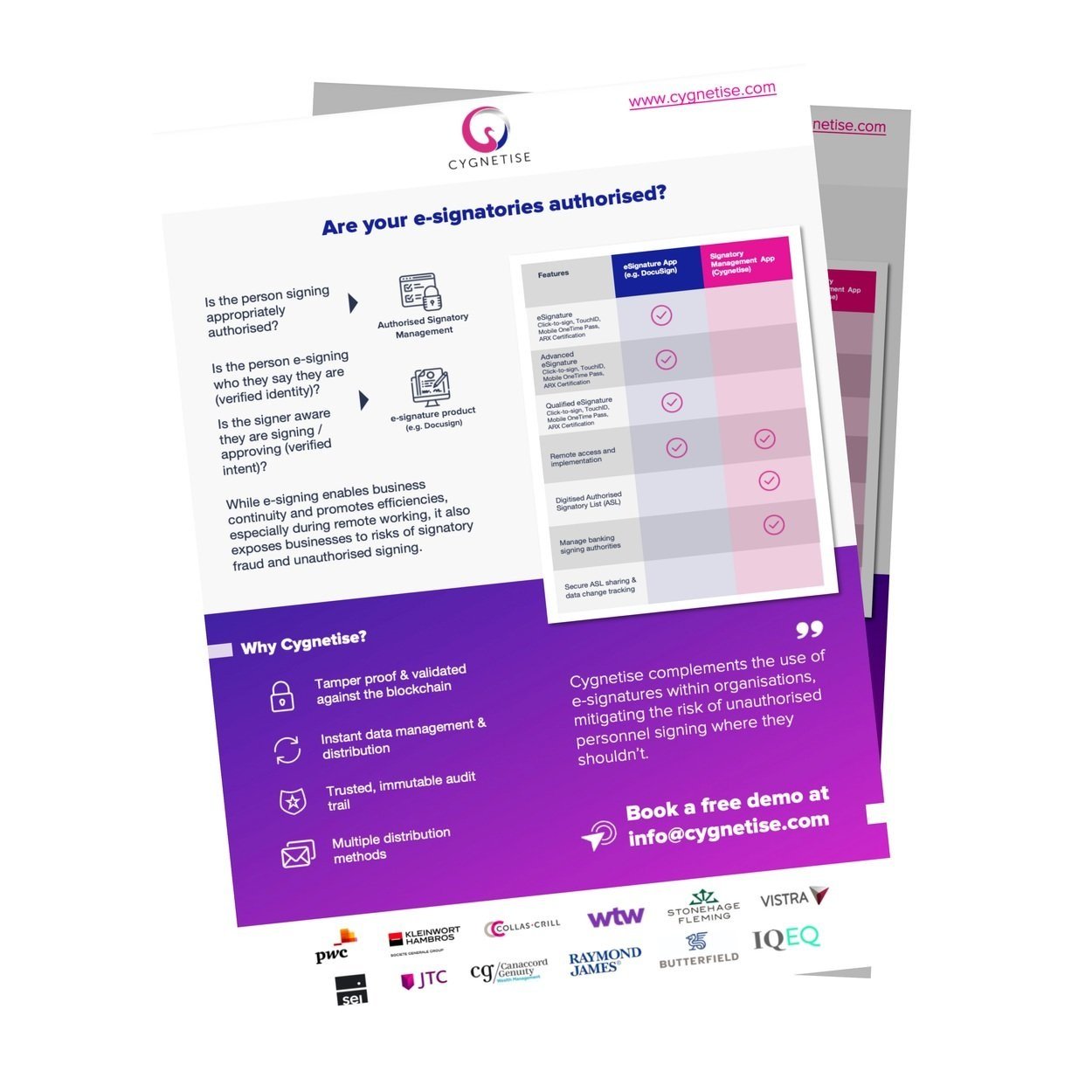Coronavirus, remote work and the use of eSignatures and Signatory Management technologies
With the recent Coronavirus outbreak globally, an increasing number of organisations are opting for remote working. While disruption to operations, especially in the supply chain is inevitable, the latest technological advancements allow most organisations to continue to operate with a certain level of normality.
But how about those who need to execute legal documentation in real time? Can they do it remotely by using electronic signatures? In this blog, we review the factors determining the validity of electronic signatures and some of the key practical implications for organisations who consider to use them.
Are electronic signatures legal?
Electronic signatures are legally binding in most situations, but there are also some exceptions. Generally, the validity of electronic signatures depends on the following 4 factors: the governing law of the document, the type of document, the form of electronic signature used and signatory authorisation.
eSignature laws across different jurisdictions
Currently, electronic signatures are valid for almost all business and personal transactions throughout the EU. According to the EU’s eIDAS regulation, “Ultimately, the "qualified electronic signature," (defined in the Ordinance under Art.25 P. 2) has the same legal effect as a handwritten signature.”
English law follows the EU legislation and also deem electronic signatures as valid in most circumstances. The UK Law Commission published their official approval statement in its 2019 report Electronic execution of documents (the Report), which was further endorsed by the UK Government in a Ministerial Statement on 3 March 2020.
In the US, federal and state laws uniformly accept electronic signatures, too. According to the federal ESIGN Act passed in 2000, electronic signatures can be used in most cases to the same extent as traditional written signatures.
Moving to eSignatures?
Cygnetise complements the use of eSignatures within organisations, mitigating the risk of unauthorised personnel signing where they shouldn’t.
Types of documents
Despite the fact that electronic signatures are formally accepted under most regional laws, according to Clifford Chance, there are still certain types of documents that currently don’t allow their use. These include:
If a document requires a wet ink signature (e.g. it needs to be filed with a registry that only accepts wet-ink signatures)
If a document is exempt under particular legislation or case law
If a document needs to be executed at a specific physical location (e.g. if there are any tax or stamp duty implications)
If a document requires the use of a corporate seal
If a document is a negotiable instrument such as a promissory note or negotiable bond
If a document is governed by the law of another jurisdiction or where international parties are involved
However, legislation is quickly adapting to a digitised world, and instances such as these are getting less and less.
Types of eSignatures
The form of an electronic signature can also affect its validity. Not all types of eSignatures carry the same level of security, liability and resilience to fraud. For example, a jpeg signature attached to an electronic word or pdf document might not be as reliable as an electronic signature generated via an e-signing platform (e.g. DocuSign).
While there have also been some initial concerns surrounding the security of e-signing platforms, we’ve now started to see these quickly changing as more advanced identification, cybersecurity and encryption technologies such as blockchain are being introduced. With widespread adoption on the way, one could even argue that it’s only a matter of time potentially before written signatures become obsolete.
Signatory authorisation
Signatory authorisation is another key factor organisations need to consider when signing important documentation. How can they ensure all authorised signatures, including eSignatures, are valid and fit for purpose?
The Cygnetise signatory management platform provides a secure, flexible and cost-effective tool allowing organisations to manage and share authorised signatory lists in real time whilst helping them reduce the risk of fraud and signature misuse.
Will the Coronavirus increase the use of electronic signatures?
It’s possible for the Coronavirus to increase the use of electronic signatures as organisations look for alternative ways to operate remotely during the outbreak. However, the level of adoption will mostly depend on organisations’ ability to adapt and tackle the aforementioned application issues.
Cygnetise provides a secure, real-time signatory management platform, equally accessible from principle or remote locations.
To learn more about Cygnetise’s application and request a free demo, please email our team at info@cygnetise.com.
Sources:



